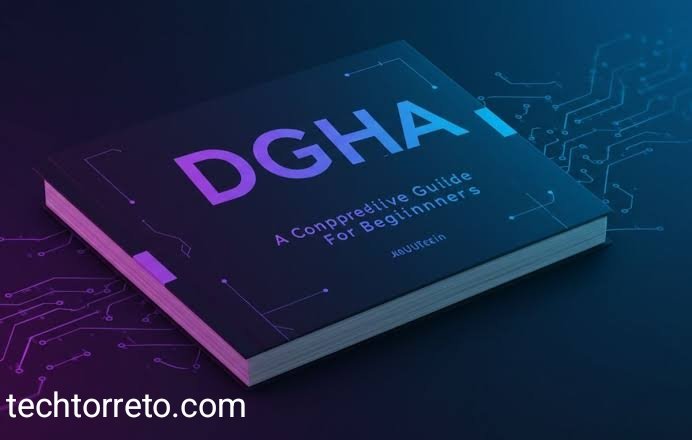Understanding dgh a: A Comprehensive Guide

The term dgh a has evolved into a dynamic element in today’s fast‑paced environment. With increasing relevance across industries, understanding what dgh a entails can yield significant benefits. In this guide, you’ll learn what dgh a means, why it’s essential, and how to leverage it effectively.
What is dgh a?
dgh a originates from combining distinct principles of development, growth, and adaptation. Over time, it has been defined practically as a strategy or capability that fosters innovation. An accurate definition reveals that dgh a is not just a concept but a practical approach to problem-solving and efficiency improvements.
Why dgh a Matters
- Enhances Efficiency: By integrating dgh a, individuals and organizations can streamline processes more fluidly.
- Promotes Innovation: It encourages creative thinking, enabling faster adaptation to new challenges.
- Boosts Competitiveness: Utilizing dgh a often leads to a clear advantage in crowded markets.
Clearly, the impact of dgh a is profound when implemented correctly.
Key Features of dgh a
- Agility: It supports rapid adjustment to changing circumstances.
- Growth-Focused Mindset: Encourages ongoing learning and development.
- Holistic Integration: Combines multiple areas, such as skills, systems, and culture.
- Analytical Approach: Relies on data-driven decision-making to drive outcomes.
These characteristics make dgh a a robust and versatile framework.
How to Use dgh a Effectively
To implement dgh a, follow these steps:
- Define Clear Goals: Begin by identifying what you want to achieve.
- Assess Current State: Analyze your existing processes or systems.
- Plan Strategically: Map out how dgh a can be integrated.
- Implement Incrementally: Start small, then scale gradually.
- Monitor Regularly: Use metrics to track progress and adapt.
- Refine Continuously: Embrace a mindset of perpetual improvement.
Together, these steps form a comprehensive roadmap for using dgh a with clarity and purpose.
Common Challenges with dgh a
- Resistance to Change: Teams may hesitate due to uncertainty.
- Unclear Objectives: Lack of precise goals can derail progress.
- Resource Constraints: Limited budget or staffing slows adoption.
- Insufficient Data: Poor measurement undermines effectiveness.
Each challenge can be managed via communication, education, and resource allocation.
Best Practices for dgh a
- Set SMART Goals: Prioritize Specific, Measurable, Achievable, Relevant, and Time‑bound targets.
- Foster Collaboration: Involve stakeholders at every stage.
- Leverage Training: Educate teams on techniques and tools.
- Utilize Feedback Loops: Regular reviews help pivot swiftly as needed.
- Document Everything: Capture lessons learned to guide future efforts.
By following these practices, you’ll maximize the impact of dgh a initiatives.
dgh a in Different Contexts
- Business: Used to streamline operations, improve product development cycles.
- Education: Enhances curriculum design by adapting to student needs.
- Personal Development: Helps individuals set and track personal growth goals.
- Technology: Powers agile software development and iterative improvement.
Across domains, dgh a is a flexible tool that drives meaningful change.
Measuring Success with dgh a
Effective measurement typically involves:
- KPIs: completion rate, time-to-completion, ROI.
- Performance Metrics: productivity increase, error reduction.
- Surveys: feedback from stakeholders to gauge satisfaction.
- Benchmarking: comparing before-and-after outcomes to assess impact.
Data ensures dgh a remains aligned with objectives and delivers real value.
Tools to Enhance dgh a
Several tools support dgh a implementation:
- Project Management Software: Trello, Asana, Jira.
- Analytics Platforms: Google Analytics, Tableau.
- Communication Tools: Slack, Microsoft Teams.
- Documentation Tools: Confluence, Notion.
Combining technology with strategy empowers smoother adoption and higher returns.
Real-Life Case Studies
- Company A: Used dgh a to cut product delivery time by 30%.
- School B: Adopted it to personalize learning paths, resulting in improved grades.
- Freelancer C: Applied dgh a methods to double client output without increasing hours.
Such stories highlight the real-world potential of dgh a.
Future Trends in dgh a
As we look ahead:
- Automation Integration: AI may automate routine aspects of dgh a.
- Predictive Analytics: Big data will guide proactive adjustments.
- Cross-Industry Adoption: Healthcare, finance, and beyond are embracing the model.
- Remote Collaboration: Virtual teams are increasingly using dgh a tools.
The evolution of dgh a is both promising and transformative.
Frequently Asked Questions about dgh a
1. What exactly is dgh a?
It’s a combined framework of development, growth, and adaptation used across sectors to improve efficiency.
2. Is dgh a suitable for small teams?
Absolutely! Its incremental approach makes it ideal for small-scale implementation.
3. How long does it take to see results?
Typically, meaningful improvements can appear within 4–8 weeks of consistent use.
4. Can I use dgh a without tech tools?
Yes, though tools amplify tracking and collaboration efficiency significantly.
5. Are there any downsides to dgh a?
If plans are vague, efforts may waste resources—having a clear roadmap is essential.
6. Where can I learn more about dgh a?
Check out reputable blogs and white papers using trustworthy external links, including educational platforms like Coursera.
Conclusion
In conclusion, dgh a offers a powerful way to enhance growth, efficiency, and adaptability. By defining clear goals, using smart tools, and fostering a collaborative culture, you can unlock its full potential. If you’re ready to elevate your projects and outcomes, start integrating dgh a today!